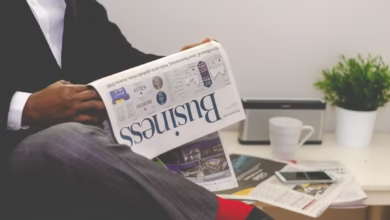Riding the Economic Rollercoaster: Recognizing Recession Signals, Sector Impacts, and Strategic Resilience

In an ever-evolving global economy, the specter of recession looms as a critical challenge for individuals, businesses, and governments alike. Understanding the early warning signs of an economic downturn is essential for proactive decision-making, enabling stakeholders to navigate turbulent waters with greater resilience. This article delves into the multifaceted nature of recessions, exploring how they impact various sectors, alter consumer behavior, and disrupt global trade and supply chains. We will also examine the crucial role of government stimulus measures in alleviating economic distress and discuss strategies for investing wisely during these challenging times. Drawing on lessons from past recessions, we aim to provide valuable insights for businesses seeking to prepare for and survive potential downturns. Join us as we unpack these vital topics to better equip ourselves for the uncertainties of the economic landscape.
- 1. Recognizing the Red Flags: Early Warning Signs of an Economic Recession
- 2. Navigating the Downturn: Sector-Specific Impacts and Investment Strategies
1. Recognizing the Red Flags: Early Warning Signs of an Economic Recession
Recognizing the early warning signs of an economic recession is crucial for policymakers, businesses, and consumers alike. Several key indicators can signal an impending downturn.
One of the most widely monitored signs is a decline in gross domestic product (GDP). A sustained decrease in GDP over two consecutive quarters typically signifies a recession. Additionally, rising unemployment rates are a significant red flag; when businesses begin to cut jobs in response to decreased consumer demand, it suggests a weakening economy.
Another critical indicator is consumer confidence. Surveys that measure consumers' willingness to spend can provide insights into future economic activity. A drop in consumer confidence often precedes reduced spending, which can create a cycle of decreased demand and further economic contraction.
Stock market performance can also serve as a bellwether. A prolonged bear market, characterized by falling stock prices, may reflect investors' pessimism about future economic conditions. Likewise, a slowdown in manufacturing activity, measurable through indices like the Purchasing Managers' Index (PMI), indicates shrinking production levels, which can lead to layoffs and reduced consumer spending.
Interest rates are another important factor. Central banks may lower rates in an attempt to stimulate growth during a downturn, but if rates are already low and the economy continues to struggle, it may signal that traditional monetary policy tools are losing effectiveness.
Finally, an increase in bankruptcies and loan defaults can highlight stress within the economy, suggesting that both consumers and businesses are struggling to meet their financial obligations. Monitoring these indicators can provide valuable insights into the health of the economy and help stakeholders prepare for potential challenges ahead.
Economic recessions are characterized by a decline in economic activity, typically measured by a decrease in GDP, rising unemployment rates, and reduced consumer spending. Early warning signs often include an inverted yield curve, where long-term interest rates fall below short-term rates, signaling market pessimism. Additionally, declining consumer confidence, reduced business investment, and falling stock market indices can indicate an impending downturn.
Recessions impact various sectors differently. Industries such as luxury goods, travel, and hospitality often experience significant declines as consumers cut back on discretionary spending. Conversely, essential services like healthcare and utilities may remain relatively stable, as their demand is less sensitive to economic fluctuations.
Investing during a recession requires a strategic approach. Defensive stocks, such as those in consumer staples, healthcare, and utilities, tend to perform better during downturns. Additionally, bonds, particularly government bonds, can serve as a safer investment during uncertain economic times. Investors might also consider diversifying their portfolios to minimize risk.
Government stimulus plays a critical role in mitigating the effects of recessions. Through fiscal policies such as tax cuts, increased public spending, and direct financial assistance to individuals and businesses, governments aim to boost demand and stabilize the economy. The effectiveness of these measures can vary based on the timing, scale, and nature of the stimulus.
Consumer behavior often shifts during economic downturns, with increased savings rates and a focus on essential purchases. Consumers may prioritize debt repayment and seek value through discounts and promotions, leading to changes in purchasing patterns.
Recessions also have far-reaching implications for global trade and supply chains. Demand for imports typically declines, affecting countries reliant on exports. Disruptions in production and logistics can further complicate international trade, leading to delays and increased costs.
Lessons learned from past recessions, such as the 2008 financial crisis, highlight the importance of financial regulation, the need for robust safety nets, and the significance of consumer confidence in recovery efforts. Businesses can prepare for recessions by building financial reserves, diversifying revenue streams, and maintaining flexible operational strategies. By understanding these dynamics, companies can better navigate the challenges of economic downturns and position themselves for recovery when conditions improve.
2. Navigating the Downturn: Sector-Specific Impacts and Investment Strategies
During an economic recession, various sectors of the economy experience distinct impacts, necessitating tailored investment strategies for each.
The consumer discretionary sector, which includes goods and services that are non-essential, typically suffers significantly during downturns. As households tighten their budgets, spending on luxury items decreases, leading to lower revenues for companies in this sector. Investors may consider shifting their focus to consumer staples, as these companies provide essential products that tend to maintain steady demand even in tough economic times. Stocks in this category often demonstrate resilience, making them safer bets during a recession.
The financial sector also faces challenges, particularly with increased loan defaults and reduced lending activity. Banks may tighten credit, affecting businesses and consumers alike. Investors should be cautious and may look for opportunities in well-capitalized institutions that can weather the downturn and potentially benefit from government interventions.
Conversely, sectors like healthcare and utilities often show stability during recessions. Healthcare is a necessity, and the demand for medical services remains consistent regardless of economic conditions. Utilities, providing essential services like water and electricity, tend to have steady cash flows and can offer reliable dividends. Investors might consider reallocating resources towards these sectors for a defensive investment strategy.
Real estate can be a mixed bag during recessions. While residential property values may decline, rental properties can provide steady income if managed effectively. Investors should assess local market conditions closely and consider diversifying their real estate holdings to include both residential and commercial properties that may be more resilient.
In summary, navigating an economic downturn requires a strategic approach tailored to sector-specific dynamics. By understanding which sectors are likely to thrive or struggle, investors can make informed decisions to protect their portfolios and potentially capitalize on opportunities that arise during challenging economic times.
In conclusion, understanding the multifaceted nature of economic recessions is crucial for both individuals and businesses alike. By recognizing early warning signs, such as declining consumer confidence and increased unemployment rates, stakeholders can prepare for the challenges that lie ahead. The diverse impacts on various sectors highlight the need for strategic investment approaches tailored to current economic conditions. Government stimulus efforts play a pivotal role in cushioning the effects of downturns, offering a lifeline to struggling industries and consumers alike.
Moreover, shifts in consumer behavior during recessions necessitate adaptability from businesses that wish to survive and thrive. The global landscape also faces significant repercussions, with trade and supply chains often disrupted, underscoring the interconnectedness of modern economies.
Reflecting on past recessions provides invaluable lessons that can inform our responses today, emphasizing the importance of resilience and proactive planning. As we navigate future economic uncertainties, embracing these insights and strategies will not only aid in weathering storms but also position us to seize opportunities that may arise in the recovery phase. Ultimately, preparedness is key, and by staying informed and adaptable, we can mitigate the adverse effects of recessions and emerge stronger.





